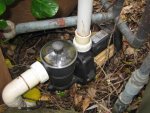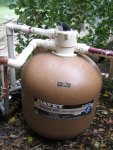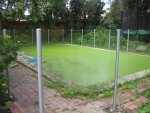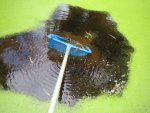We bought a house with a pool this year, but the pool was bright green with duckweed and the amount of leaves and branches on the bottom was unbelievable (trees were overhanging on every side and some actually had branches dragging in the water). We have now cut back the surrounding trees and spent days scooping out duckweed, leaves and branches. Guesses about when the pool was last used range from 10 to 20 years so the chance of any pool equipment functioning is probably small.
Due to the 10 year drought where I am in Australia water restrictions make emptying and refilling the pool a costly last resort.
We are up to trying to get the thick layer of sludge off the bottom and I'm trying to figure out how I check if the pump is working. I know it's unlikely but it's worth a try. I'm not sure how to go about it, especially as I'm worried the debris remaining in the pool might damage something (I think I need to get a basket for the skimmer as I can't see one in there - is it important to do this first?).
Apologies for my complete lack of knowledge - I'm trying to upskill at pool school but it's hard to know where to start when there is so much wrong!
Thanks for any help!
Due to the 10 year drought where I am in Australia water restrictions make emptying and refilling the pool a costly last resort.
We are up to trying to get the thick layer of sludge off the bottom and I'm trying to figure out how I check if the pump is working. I know it's unlikely but it's worth a try. I'm not sure how to go about it, especially as I'm worried the debris remaining in the pool might damage something (I think I need to get a basket for the skimmer as I can't see one in there - is it important to do this first?).
Apologies for my complete lack of knowledge - I'm trying to upskill at pool school but it's hard to know where to start when there is so much wrong!
Thanks for any help!






